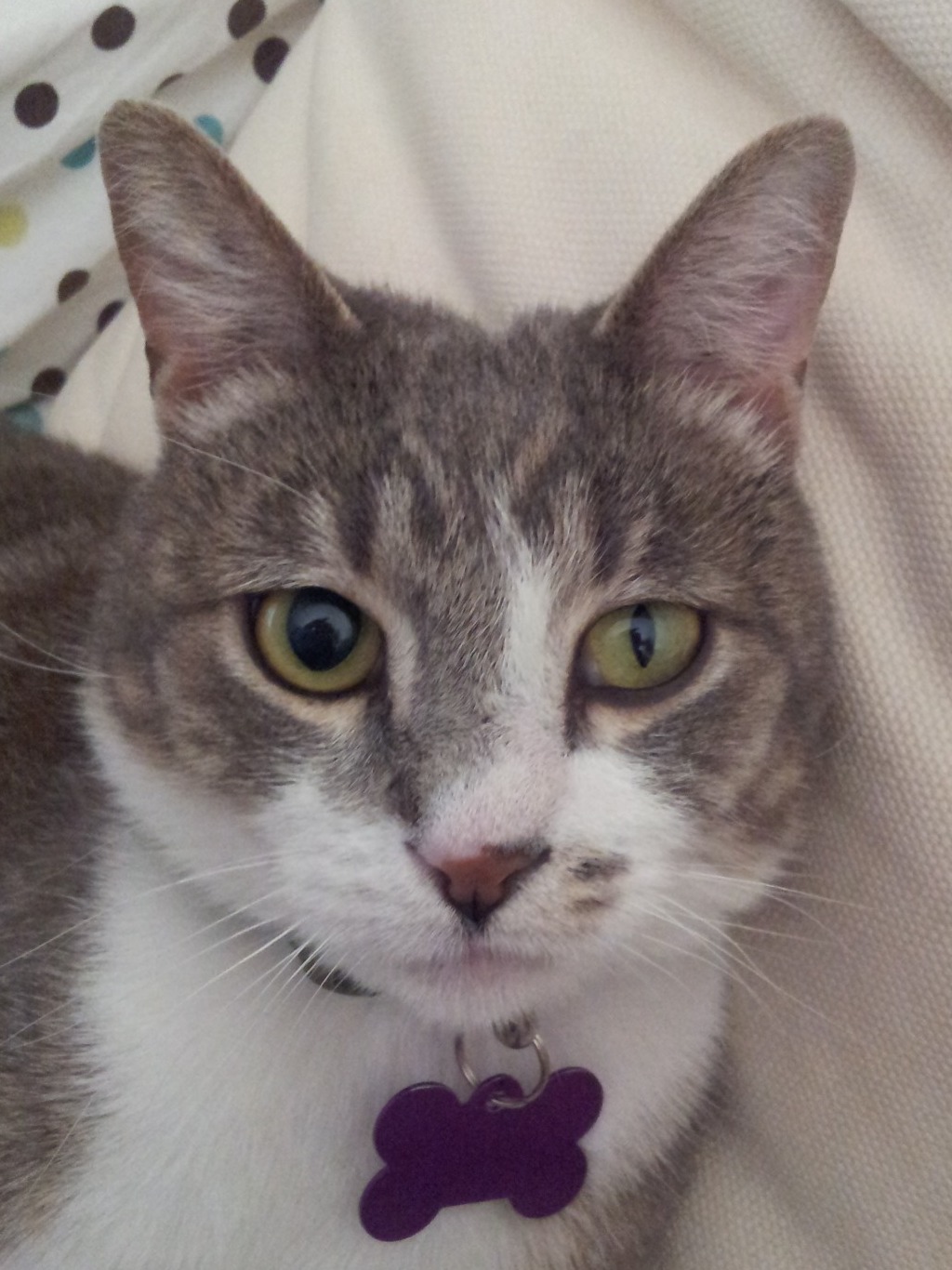
Blumoon531 [CC BY-SA 4.0 (https://creativecommons.org/licenses/by-sa/4.0)]
by Nomi Berger
Cats’ eyes, so large and so lovely, can also signal injury or illness.
Consider the condition called Anisocoria, where the pupil of one eye is larger than the pupil of the other eye. Odd sized pupils occur for a number of reasons and may or may not be accompanied by other symptoms, depending on the underlying cause.
An immediate visit to your vet is a MUST if you also notice: a change in the color of kitty’s eye, redness or cloudiness; a change in the position of the eye in its socket; any abnormal eye movement; a drooping eyelid; head tilting; pawing at the eye as if it hurts; obvious loss of vision, or confusion.
Anisocoria may be neurological or ocular and can result from any of the following:
Glaucoma: increased fluid pressure within the eyeball.
Anterior uveitis: inflammation of the uvea, the pigmented layer of the eye.
Corneal ulcers: open sores on the cornea.
Spastic pupil syndrome: a symptom of FeLV (feline leukemia virus) that may alternate between eyes.
Oculomotor nerve paralysis: caused by a head injury, tumor or aneurysm or by such systemic diseases as diabetes and hypertension.
Tumors: brain, eye or optic nerve tumors.
Horner’s syndrome: a condition that causes drooping of the upper eyelid and constriction of the pupil.
Stroke: a rupture or blockage of a blood vessel in the brain causing a loss of blood supply to that area of the brain.
Head trauma: it may cause bleeding inside the brain that produces increased pressure within the skull.
Iris atrophy: most often seen in senior cats, the thinning of these colored cells can lead to a change in pupil size in the affected eye.
Medications like atropine that causes the pupil to dilate.
Your vet will begin with a complete physical followed by a thorough examination of kitty’s affected eye. This includes tests to measure the intra-ocular pressure inside her eye as well as her tear production. He’ll search for evidence of any injury to her cornea by instilling an eye drop that stains her cornea with a fluorescent dye and by taking scrapings from the surface of her eye. He may order a complete blood count, biochemical profile and urinalysis to evaluate her overall health. He will also need to determine if the cause is ocular or neurological. In some cases, where the cause can’t be easily determined, he will refer you to a veterinary ophthalmologist for more highly specialized diagnostic work and a firm diagnosis.
Once you receive a diagnosis, you will also receive a treatment plan. Depending on the cause of kitty’s condition, her recovery may be partial or complete. But at least the question as to the reason for her Anisocoria will have been answered.







